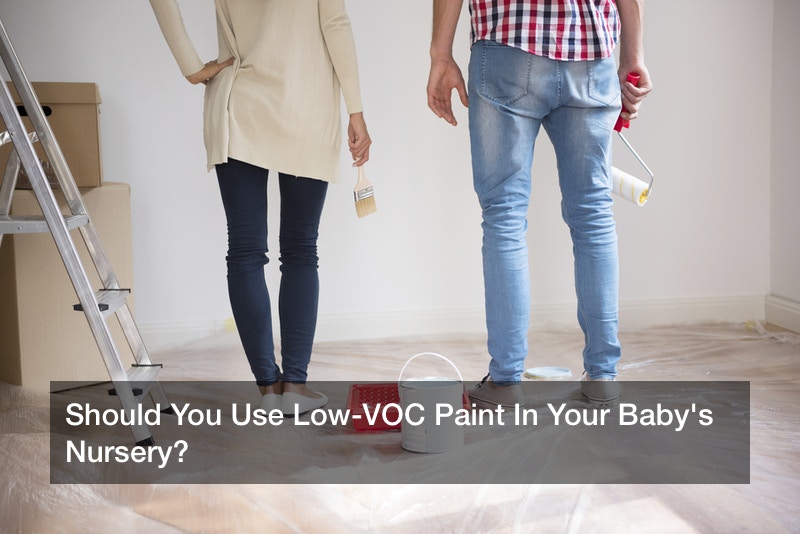
Painting the walls of your home is the quickest way to make a big change in your home decor. It is also one of the most nerve-racking home improvement projects you can undertake yourself. With a little preparation, you can pursue this task with confidence, right?
Not so fast. While slapping some paint on a wall doesn’t exactly require an art degree, it is undeniable that research and preparation are almost more important than actual technique. The paint you choose will literally be surrounding you for the foreseeable future. Take a few minutes to prepare beforehand to avoid wasting time, energy, and money.
Choosing a Paint For the Nursery: What You Need to Consider.
One study by Sweden’s Dampness in Buildings and Health found that PGE (propylene glycol) exposure increased their chances of developing other sensitivities. Other studies have found a two to five increase in indoor allergens as compared to those outdoors, which can increase the risk of other health issues. There are a few things parents can do.
Why Should I Avoid VOCs?
It’s not uncommon for parents to look for non toxic paint for nurseries. The difference in paint ingredients over the years is striking. While companies strive to make their products safer for all members of the population, there are still those sections remaining vulnerable to certain chemicals.
Volatile organic compounds, or VOCs, according to the Environmental Protection Agency (EPA) are a variety of chemicals that emit gases that can cause short-term and in some cases long-term health issues. These include headaches, dizziness, fatigue, and nausea to name a few.
So, how do you avoid these potentially volatile gases? One option is to research the ingredients of the paint itself. Non toxic paint for nurseries are available from different brands in a variety of colors and finishes. Look for brands that specifically address your concerns or email customer care for more information about their policies.
“What Is Wall Primer For?” And Other Important Questions to Ask Before Going to the Store.
After completing some research on paint options, you’re ready for the next step. Once you’ve made a selection from the non toxic paint for nurseries on the market, it’s time to prepare the space. This should be done before going to the nearest home improvement store.
Walls need to be prepped to take a few layers of paint. Before adding a primer, it’s best to wipe down the entire wall to be painted with a simple mixture of soap and water. This gets the area clean and ready for wall primer.
Adding a wall primer before painting does a few things. The primer helps the paint adhere to the surface better, but it also can serve as a better “blank canvas” if your walls are not white. The color of your chosen paint will be more vibrant as a result. A wall primer should not be skipped. Remember to check the ingredient list! It would be unfortunate to use non toxic paint for nurseries and ruin it by using a non-compatible wall primer.
How Much Paint Do I Need For My Room?
Buying the correct amount of paint doesn’t need to be tricky. Choosing the right amount is important for two reasons. If you buy too much, that’s extra money out of your wallet and paint that needs to be disposed of properly. If you buy too little, the second batch of paint may not be a perfect match for the first.
A good guideline is one gallon of paint for every 350 square feet of surface. A few factors can affect this though. Firstly, not using a wall primer can create the need for a second coat of paint. Secondly, painting directly on drywall requires more paint because it soaks up the paint. When in doubt, ask a paint specialist for advice.
Painting your home can be a fun way to make a big change. However, it is important to understand the quality of the paint you will be using. Some research suggests that VOCs are to be avoided, especially when it comes to nurseries. Before you paint, remember to do your research, use a wall primer, and buy the correct amount of quality paint the first time.

